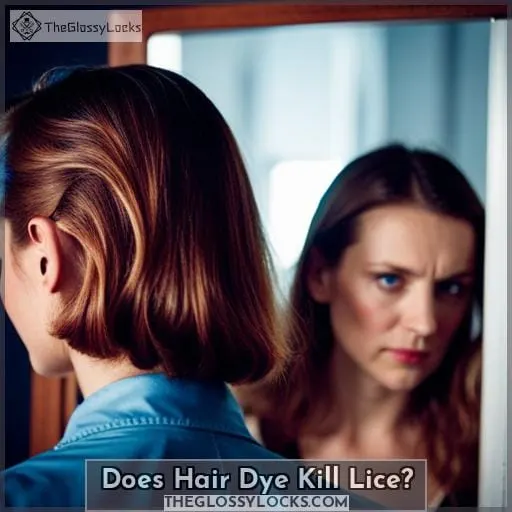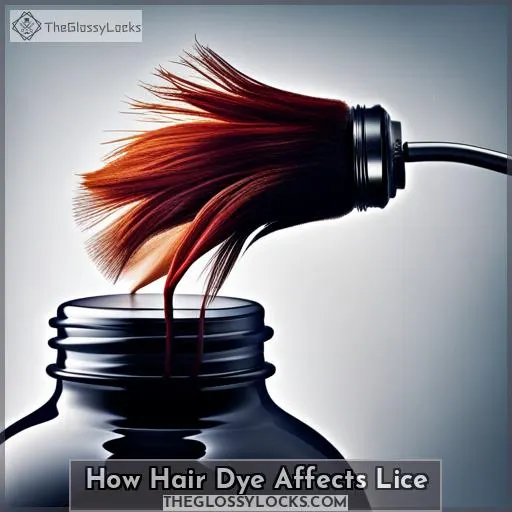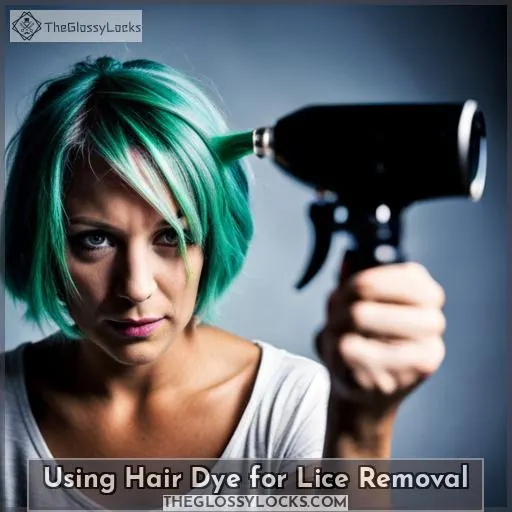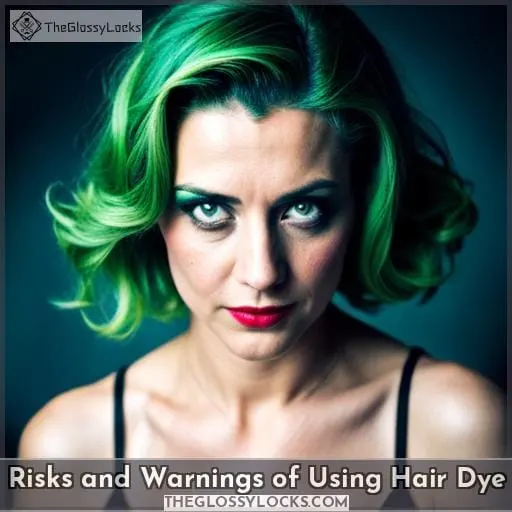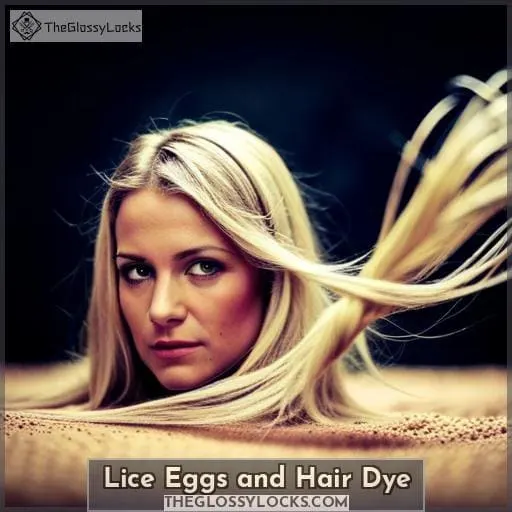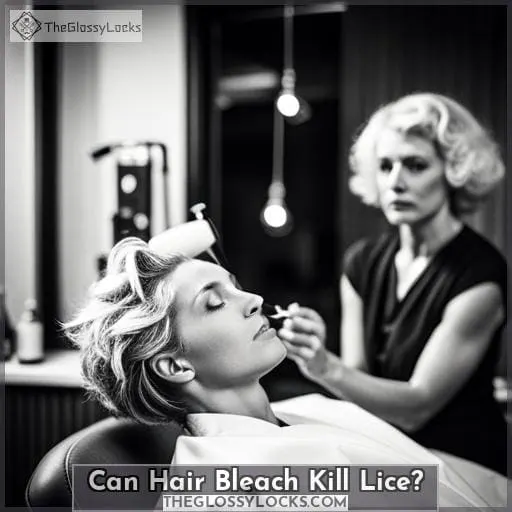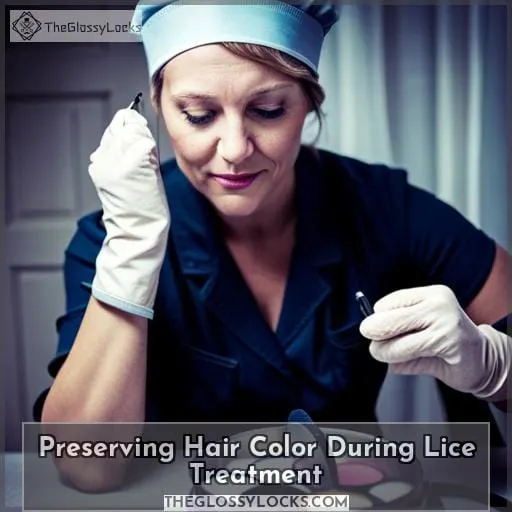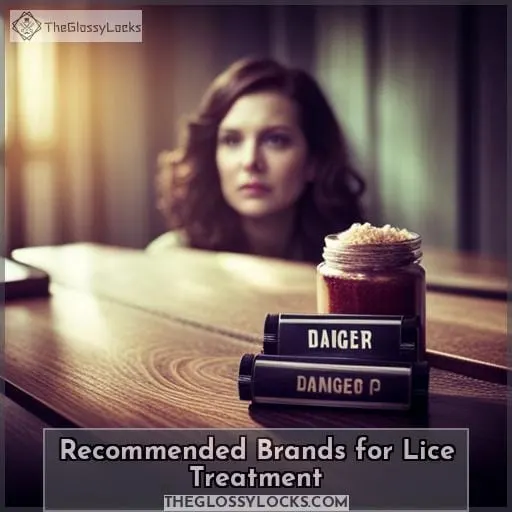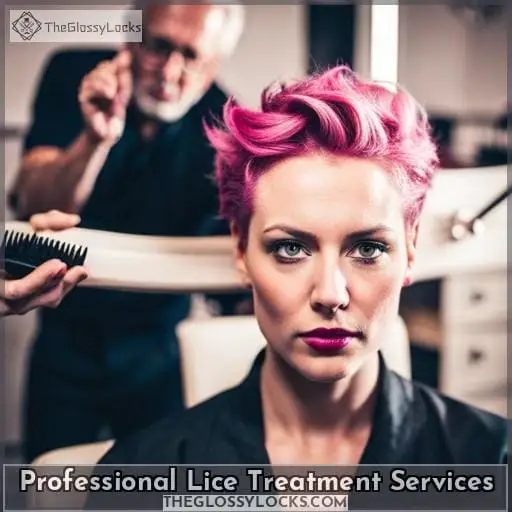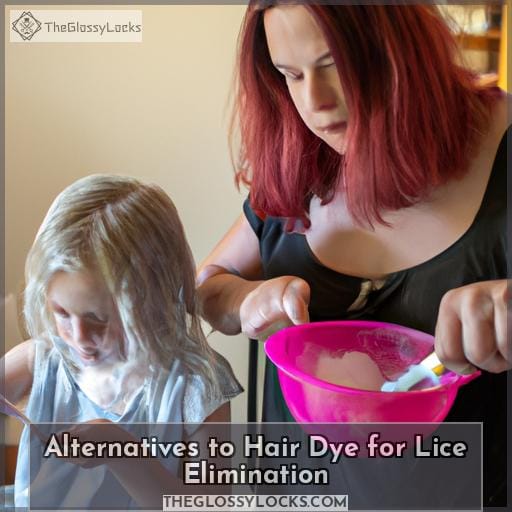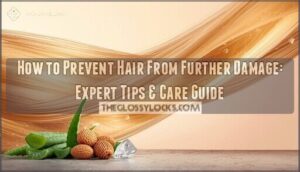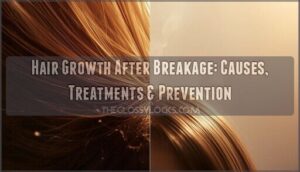This site is supported by our readers. We may earn a commission, at no cost to you, if you purchase through links.
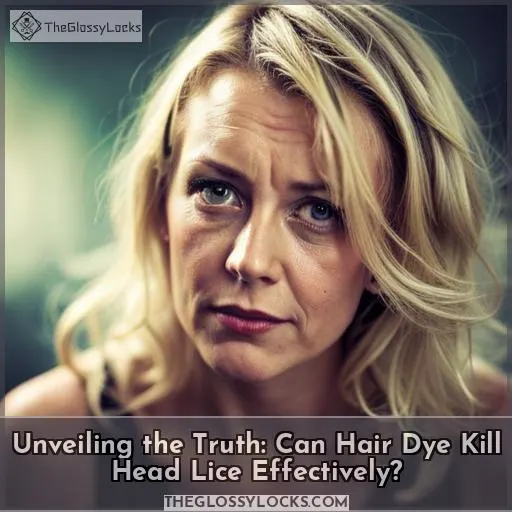
As we navigate the risks, address the impact on lice eggs, and explore alternatives, discover the truth behind the intersection of hair dye and head lice—a quest for liberation and peace of mind.
Table Of Contents
- Key Takeaways
- Does Hair Dye Kill Lice?
- How Hair Dye Affects Lice
- Using Hair Dye for Lice Removal
- Risks and Warnings of Using Hair Dye
- Lice Eggs and Hair Dye
- Can Hair Bleach Kill Lice?
- Preserving Hair Color During Lice Treatment
- Recommended Brands for Lice Treatment
- Professional Lice Treatment Services
- Alternatives to Hair Dye for Lice Elimination
- Frequently Asked Questions (FAQs)
- Conclusion
Key Takeaways
- Hair dye does not effectively eliminate lice eggs.
- Hair dye can cause hair damage and skin irritation.
- Lice eggs are resistant to topical treatments, making them difficult to eliminate without professional assistance.
- Consider non-toxic, ammonia-free options for safer lice treatment and healthier hair coloring.
Does Hair Dye Kill Lice?
If you’ve ever wondered whether hair dye can effectively eliminate head lice, the answer becomes clearer when we delve into the intricate relationship between hair dye components and these persistent parasites.
While there are anecdotal reports suggesting that certain dyeing techniques have been successful in eradicating lice infestations, scientific evidence remains limited.
The key chemicals found in many hair dyes are ammonia and hydrogen peroxide. Ammonia, commonly used in permanent hair dyes as an alkaline agent to open up the cuticle of the hair shafts for color penetration, has been suggested to be effective against lice due to its irritant properties.
It is important to note that while some individuals may experience success with using hair dye for lice removal, resistant strains of these parasitic insects pose a significant challenge. Lice have demonstrated genetic resistance not only towards insecticide-based treatments but potentially towards unconventional remedies like natural oils or vinegar combinations with specific chemicals found in certain dyes.
Given this information and considering pediatric caution regarding potential damage caused by chemical exposure at such a young age,it is recommended consulting healthcare professionals before attempting any alternative methods or relying solely on dyed solutions for complete eradication of headlice infestation.
How Hair Dye Affects Lice
When considering the impact of hair dye on head lice, it’s crucial to understand the chemical components involved.
Ammonia and hydrogen peroxide, common in hair dye formulations, have been suggested to affect lice, but their efficacy varies.
Despite common misconceptions, hair dye doesn’t exterminate lice; instead, it may color them, leaving nits largely unaffected.
The resilience of lice and the diverse formulations in different hair dye brands present challenges, debunking the notion of hair dye as a definitive solution for lice elimination.
Chemical Impact
Applying hair dye involves exposing lice to chemicals, potentially affecting their viability and challenging their resilience.
- Chemical Interactions: The intricate dance of ammonia and hydrogen peroxide in hair dye creates an environment where lice may struggle to thrive.
- Dyeing Techniques: Careful application, targeting scalp and hair base, maximizes the chemical impact, offering a potential advantage in the battle against resilient lice.
- Lice Resistance: Despite the potential, lice’s adaptive prowess poses a formidable challenge, as their resistance to various treatments, including unconventional ones, continues to grow.
Common Misconceptions
Despite common belief, hair dye doesn’t create a hostile environment for lice, and there’s a crucial reason why it falls short in eradicating these persistent parasites.
While anecdotal stories tout its efficacy, hair dye doesn’t kill lice or their eggs (nits) effectively due to their resilience. Lice have developed resistance to many treatments, including the chemicals in hair dye.
Understanding these limitations is vital for seeking alternative, more targeted lice treatments and preventative measures.
Using Hair Dye for Lice Removal
When contemplating using hair dye for lice removal, consider the type of dye wisely, ensuring it contains ammonia for potential effectiveness.
Always conduct a patch test beforehand to gauge skin sensitivity or adverse reactions.
Follow precise application steps, thoroughly covering the scalp and hair, and conclude with meticulous rinsing and combing to maximize potential lice elimination.
Choosing the Right Hair Dye
When selecting a hair dye to tackle lice, ensure it contains ammonia for potential efficacy in eliminating these pests.
Consider:
- Color compatibility
- Chemical sensitivity
- Dye application techniques
Prioritize non-toxic, ammonia-exposed options for safer lice treatment and healthier hair coloring.
Patch Test Precautions
Before starting your lice removal process with hair dye, conduct a patch test to ensure safety.
Test a small area with the dye to check for allergic reactions. Sensitivity testing helps prevent skin risks, especially with permanent dye and ingredients like paraphenylenediamine (PPD), reducing allergy precautions and potential hair damage.
Application Steps
Ensure precision and effectiveness in eliminating head lice by following the recommended application steps using hair dye.
- Application Techniques:
- Thoroughly coat scalp and affected areas.
- Effectiveness Assessment:
- Check for live lice post-treatment.
- Safety Measures:
- Use gloves, avoid contact with eyes.
Rinsing and Combing
After rinsing out the hair dye thoroughly, comb through the hair using a fine-toothed lice comb.
Employ varied combing angles to dislodge any remaining lice or nits.
Alternate directions and use vinegar-based solutions for added efficacy against lice resistance.
Consistent manual removal disrupts the lice life cycle, crucial in combating reinfestation.
Risks and Warnings of Using Hair Dye
Using hair dye for lice removal comes with potential risks and warnings that should be considered:
- Safety Measures:
- Prioritize safety by using protective gear like disposable gloves and avoiding contact with sensitive areas like eyes and mouth during dye application.
- Chemical Exposure:
- Be cautious of chemical exposure and its potential adverse effects, such as skin sensitivity, allergic reactions, redness, swelling, or itching.
- Health Concerns:
- Understand the health risks associated with dye application, including the possibility of hair damage and thinning due to overuse or improper application.
- Lice Infestation:
- Recognize that while dye may kill live lice, it doesn’t eliminate nits, requiring thorough removal and potential reapplication.
Taking precautions, understanding the potential risks, and considering alternative safe lice treatment options, including prescription treatments or non-chemical solutions, are crucial to ensure effective lice removal without compromising health or exacerbating the lice infestation.
Lice Eggs and Hair Dye
Hair dye, unfortunately, doesn’t effectively eliminate lice eggs, also known as nits, despite its impact on live head lice. The chemical interaction between dye components and the resilient casing of nits limits the penetration needed to neutralize them.
While dye may color the eggs, its ability to disrupt their viability remains minimal. Even the heated removal process during dye application often fails to affect these stubborn structures.
Nits possess remarkable resilience, often impervious to the chemicals in hair dye. Their protective shells shield them from the coloration process and hinder any substantial impact the dye might have. As a result, color retention might occur, but the eggs’ viability remains largely unaffected.
This resilience complicates the eradication process and necessitates alternative strategies for addressing lice eggs effectively.
While some natural oils or specialized lice products might aid in loosening nits, their efficacy in eliminating the eggs entirely is limited. Exploring pregnancy-safe treatments or heated removal processes could provide safer alternatives for dealing with lice eggs without relying solely on hair dye’s insufficient impact.
Can Hair Bleach Kill Lice?
Hair bleach lacks efficacy in effectively eradicating lice.
While it’s known for lightening hair, its impact on lice extermination is limited.
Bleach’s effectiveness is hindered by several factors, primarily the challenge of resistance exhibited by lice against various treatments.
The chemical nature of bleach fails to penetrate the protective casing of lice eggs (nits), rendering it ineffective in eliminating them.
Despite its potential to affect adult lice, it falls short in eradicating nits, crucial for complete lice removal.
Resistance challenges persist within lice populations, making treatments like bleach less reliable.
Children, especially, are susceptible to lice infestation, and using bleach raises safety concerns due to its harsh nature on the scalp and hair.
Lice clinics often advise against relying on bleach for eradication due to its limited success and potential risks.
For safe lice removal, considering alternative, scientifically-tested treatments such as those offered by reputable lice removal services like Lice Clinics of America may ensure a lice-free guarantee without compromising on safety.
Preserving Hair Color During Lice Treatment
To maintain your hair color during lice treatment, prioritizing specific care methods becomes crucial to avoid compromising the dye while effectively addressing the lice infestation.
When undergoing lice treatment, it’s important to take steps to preserve your hair color and prevent any potential damage caused by chemicals or excessive heat.
Firstly, be sure to use a conditioner specifically designed for colored hair. This will help nourish and protect your strands while minimizing any fading or dryness that may occur during treatment.
Additionally, consider wearing a shower cap during the application of lice treatments. This can help create a barrier between the product and your dyed hair, reducing the risk of discoloration or fading.
When rinsing out these treatments from your hair after application, opt for cold water instead of hot water. Cold water helps seal in moisture and prevent further damage caused by heat exposure.
Lastly, allow your hair to air dry naturally instead of using heated styling tools such as blow dryers or straighteners which can cause additional heat damage.
By following these precautions and incorporating proper maintenance techniques into your routine throughout lice treatment you can successfully preserve both the healthiness and vibrancy ofyour dyed locks.
Recommended Brands for Lice Treatment
You’ll want to choose a lice treatment that’s safe for your hair color and effective at killing lice.
- AirAllé: FDA-cleared and highly effective at killing both live lice and their eggs.
- OneCure™ Home Treatment Kit: Clinically proven at-home, heated-air solution.
- CURE! Lice Remover Kit: Safe, non-toxic, and pesticide-free gel for treatment.
- Nix: Over-the-counter medicated shampoo that kills lice and nits.
- LiceFreee Products: Natural, non-toxic lice treatment options.
Professional Lice Treatment Services
While professional lice treatment services can be costly, they’re often the most effective way to eliminate an infestation.
Lice resistance poses a significant challenge for lice eradication, and at-home remedies often lack the necessary efficacy.
Lice eggs are also resistant to topical treatments, making them difficult to eliminate without professional assistance.
Professional lice treatment services use a combination of techniques to kill both live lice and their eggs, including heated air, chemical treatments, and manual removal.
These services can help you get rid of lice quickly and effectively, and prevent future infestations.
Alternatives to Hair Dye for Lice Elimination
In addition to hair dye, there are a number of other effective alternatives for lice elimination, including over-the-counter treatments and professional services.
- Over-the-counter treatments typically involve the use of a chemical insecticide, such as permethrin or pyrethrin. These treatments are effective at killing both live lice and their eggs, but they can be harsh on hair and scalp.
- Silicone-based treatments suffocate lice without the use of insecticides. These treatments are generally well-tolerated by hair and scalp, but they may not be as effective as insecticide-based treatments.
- Plant-based treatments, such as tea tree oil and neem oil, have been shown to have some efficacy against lice. However, these treatments aren’t as well-studied as insecticide-based or silicone-based treatments.
- Vinegar and oil can be used as a pre-treatment to help loosen lice and their eggs from the hair. This can make it easier to remove them with a lice comb.
- Lice combing is an important part of any lice treatment regimen. It’s the only way to remove live lice and their eggs from the hair. Lice combs should be used daily until all lice and eggs have been removed.
Frequently Asked Questions (FAQs)
What are the ingredients in hair dye that are effective against lice?
Hair dye contains ammonia and hydrogen peroxide, which are both effective against lice.
However, hair dye doesn’t kill lice eggs, so it must be used in conjunction with other treatments to remove all lice from the scalp.
How long does it take for hair dye to kill lice?
Although hair dye is effective at killing live head lice, it doesn’t eliminate their eggs, known as nits.
To ensure complete lice removal, you must use a lice comb to remove nits after dyeing your hair.
How do I use hair dye to kill lice?
To use hair dye to kill lice, first apply a vinegar solution to the hair and scalp.
Then, apply the dye and leave it on for the recommended amount of time.
Rinse thoroughly and comb the hair with a fine-toothed comb to remove any remaining lice or nits.
What are the risks and side effects of using hair dye to kill lice?
Although hair dye may kill live lice, it doesn’t eliminate lice eggs, and it can cause hair damage and skin irritation.
What are the alternatives to using hair dye to kill lice?
There are a number of alternative treatments for head lice, including:
- Over-the-counter kits
- Prescription medications
- Essential oils
You should consult with a doctor to determine the best treatment option for you.
Conclusion
While hair dye can kill head lice, it isn’t the most effective or safest method of lice removal. There are many risks and warnings associated with using hair dye, and it’s important to weigh these risks before deciding if this is the right treatment option for you.

